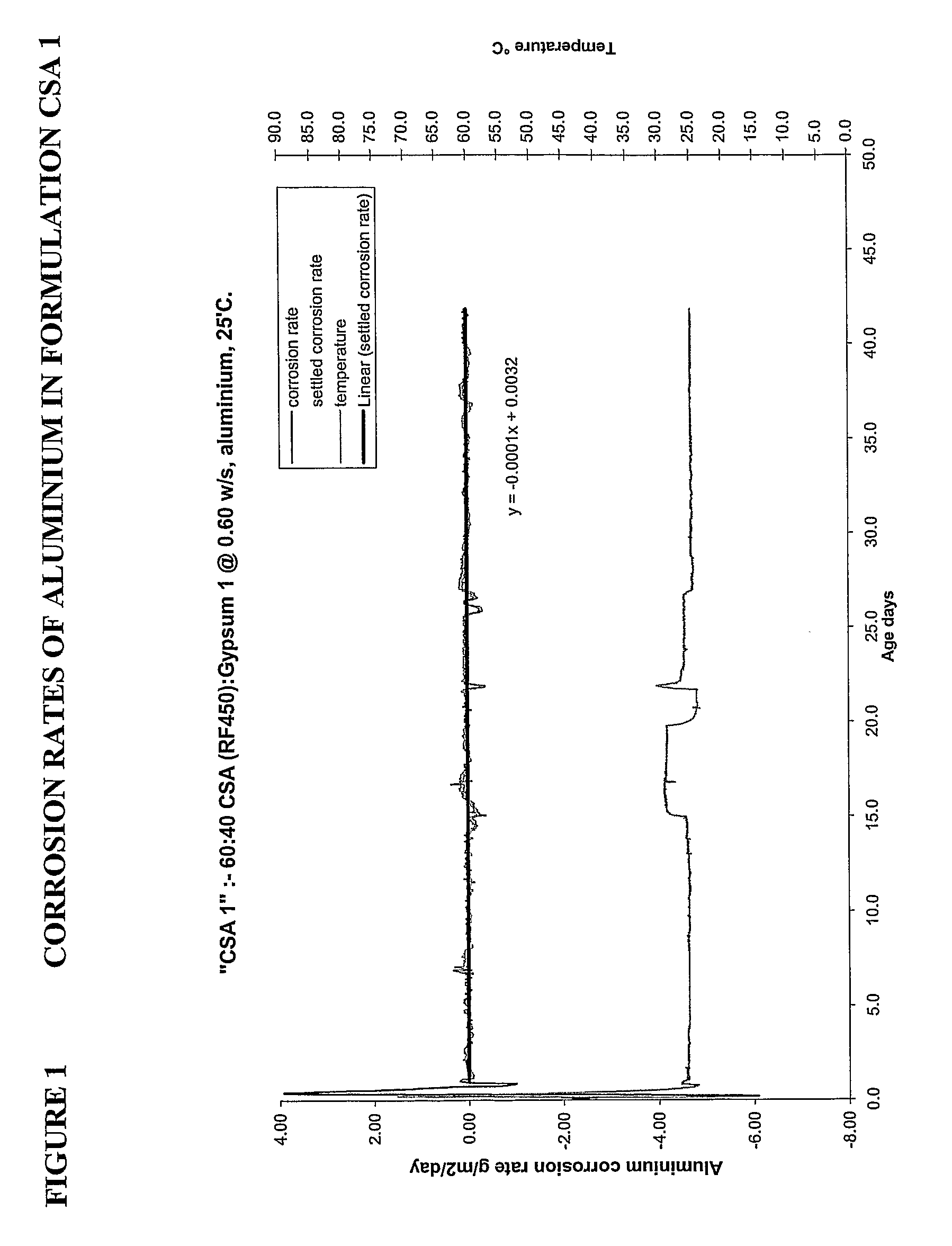Encapsulation Medium
a technology of encapsulation and cementitious materials, applied in the direction of glass making apparatus, furnace types, solid waste management, etc., can solve the problems of significant difficulties in the treatment of legacy reactive metal waste, corrosion-prone materials, and the effect of encapsulation structure strength and stability
- Summary
- Abstract
- Description
- Claims
- Application Information
AI Technical Summary
Benefits of technology
Problems solved by technology
Method used
Image
Examples
Embodiment Construction
[0025]The composition according to the first aspect of the invention finds specific application in the encapsulation of ion exchange resins and reactive metallic residues, specifically in the encapsulation of amphoteric reactive metallic residues, such as those which contain aluminium. The composition finds particular use in the encapsulation of a variety of waste materials, including various chemical wastes, but is principally of value in the encapsulation of waste materials generated in the nuclear processing industry. Other possible applications include the encapsulation of aluminium bars employed in the reinforcement of structural cement, which is used in the construction industry.
[0026]The method according to the second aspect of the present invention may be applied to the treatment of a wide range of waste materials. Of particular value, however, is the application of the method to the treatment of waste materials which comprise reactive metallic residues, most specifically am...
PUM
| Property | Measurement | Unit |
|---|---|---|
| particle size | aaaaa | aaaaa |
| water content | aaaaa | aaaaa |
| water content | aaaaa | aaaaa |
Abstract
Description
Claims
Application Information
 Login to View More
Login to View More - R&D
- Intellectual Property
- Life Sciences
- Materials
- Tech Scout
- Unparalleled Data Quality
- Higher Quality Content
- 60% Fewer Hallucinations
Browse by: Latest US Patents, China's latest patents, Technical Efficacy Thesaurus, Application Domain, Technology Topic, Popular Technical Reports.
© 2025 PatSnap. All rights reserved.Legal|Privacy policy|Modern Slavery Act Transparency Statement|Sitemap|About US| Contact US: help@patsnap.com


